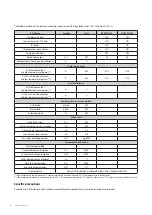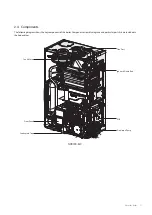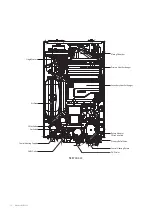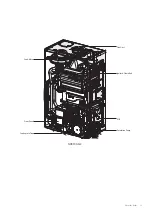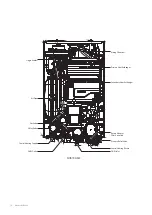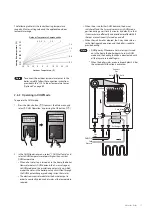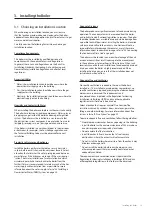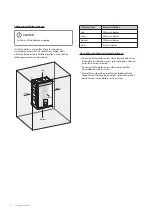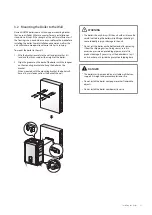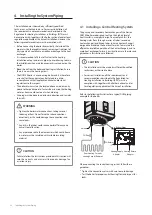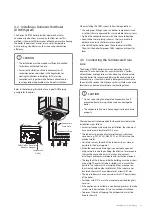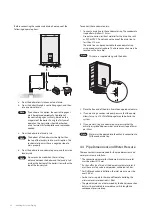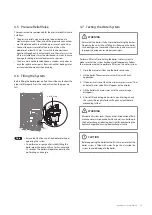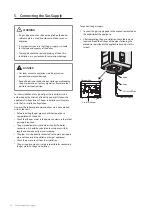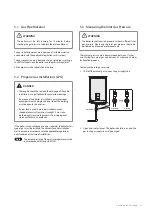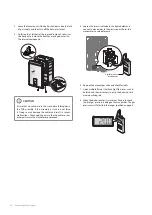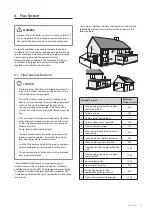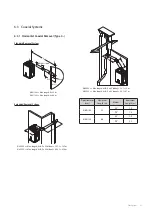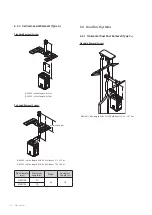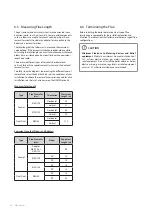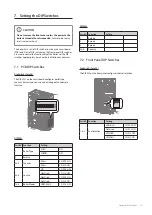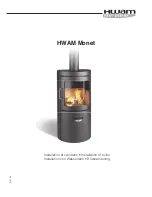
24 Installing the System Piping
Before connecting the condensate drain, choose one of the
following disposal options:
a
b
c
d
a. From the boiler directly into an external drain.
b. From the boiler, through a neutralizing agent, and then
into an external drain.
Note
If you choose this option, the neutralizing agent
must be replaced periodically. Depletion of
the neutralising agent will vary, based on the
usage rate of the boiler. During the first year of
operation, the neutraliser should be checked
every few months for depletion and replaced as
needed.
c. From the boiler into a laundry tub.
Note
The bottom of the boiler must be higher than
the top of the laundry tub to use this option. The
condensate line must have a negative slope to
drain properly.
d. From the boiler into a condensate pump, and then into a
laundry tub.
Note
A pump can be used when there is a long
distance between the boiler and the laundry tub
or when the bottom of the boiler is lower than the
top of the laundry tub.
To connect the condensate drain:
1. Connect a drain line to the condensate trap. The condensate
trap outlet will allow 21.5 mm.
Use only corrosion-resistant material for the drain line, such
as PVC or CPVC. Do not reduce the size of the drain line to
less than 21.5 mm.
The drain line can be connected to the condensate trap
using a condensate trap hose. The hose connection must be
secured with a hose clip.
Note
This hose is supplied along with the boiler.
2. Place the free end of the drain line into an appropriate drain.
3. If you are using a condensate pump, ensure that the pump
allows for up to 3.78 LPH of drainage for each boiler in the
system.
4. If you are not using a condensate pump, ensure that the
drain line is pitched downward at a minimum slope of 6 mm
per 30 cm.
Note
Water must be poured into the exhaust connection to
fill the condensate trap.
4.4 Pipe Dimensions and Water Pressure
The requirements recommended for the pipe dimensions and
water pressure are as follows:
●
The connection diameter for the domestic cold water inlet
must be at least Ø15 mm.
●
If a shut-off valve is fitted at the domestic cold water inlet, it
must have a safety valve incorporated, calibrated to 9 bar.
●
For DHW production installation, the inlet pressure must be
over 0.5 bar.
●
For hot water supply to the second floor of a building, the
minimum pressure required is 1.0 bar.
●
The pipe diameter is not determined by the boiler connection
but must be calculated in accordance with its length and
consequent pressure drop.
Содержание NCB700-42C
Страница 69: ...68 Appendices 12 4 Ladder Diagram 3 15A...
Страница 73: ...Memo...
Страница 74: ...Memo...
Страница 75: ...Memo...

